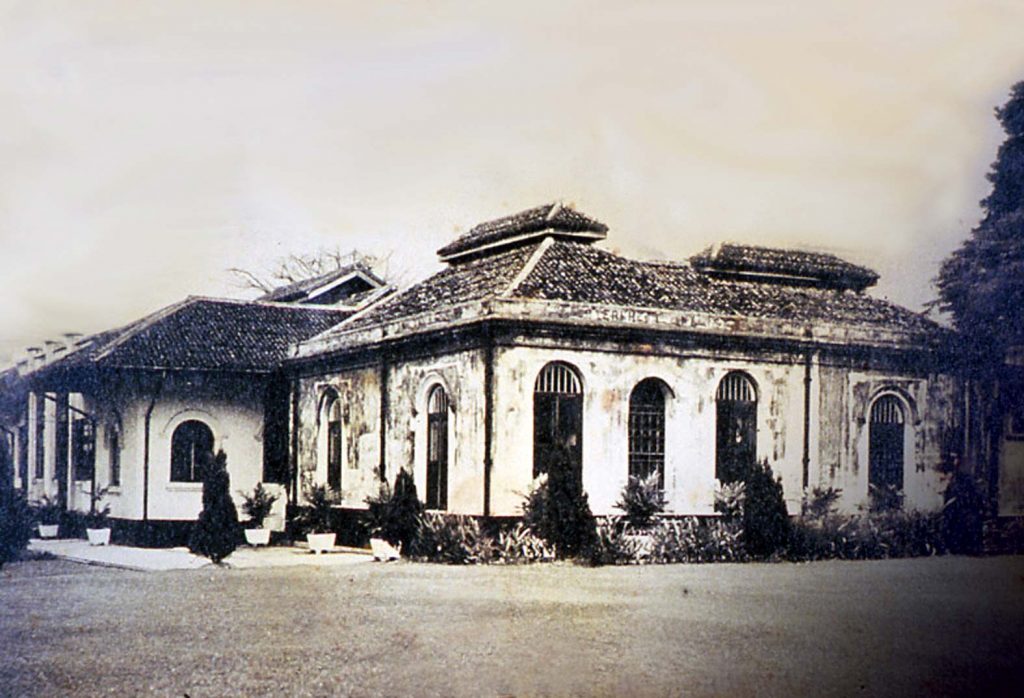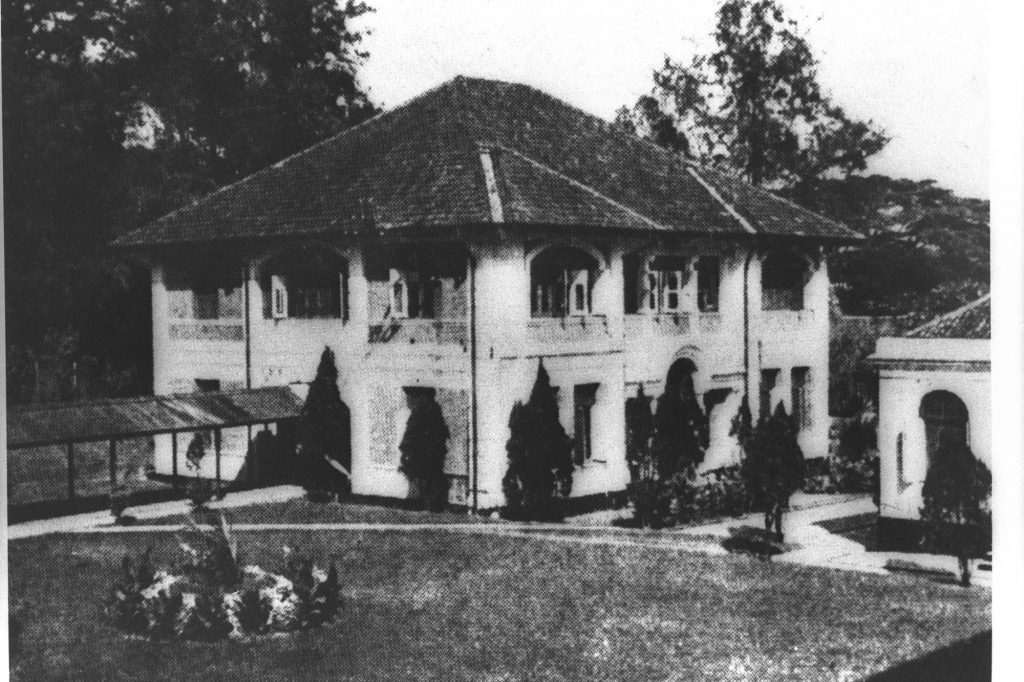Standing on the Shoulders of Giants
The NUS Medical Society held its Annual General Meeting on 11 September 2019, where the 71st Executive Committee was officially sworn into office, thus taking over duties from their predecessors. The following is an edited outline of Tseng Fan Shuen’s address at the event, as incoming President.
by Tseng Fan Shuen
President, NUS Medical Society
The NUS Medical Society (MedSoc) marked its 70th anniversary on 14 February 2019. In celebration of seven decades of student service and leadership, I thought I would take everyone on a trip back in time. While I do not profess to be an expert on the history of Medicine in Singapore, I believe that learning about the past helps us to understand the present, and plan for the future.
 The first premises of the medical school, which was converted from a female lunatic asylum. (Photo credit: National Archives of Singapore)
The first premises of the medical school, which was converted from a female lunatic asylum. (Photo credit: National Archives of Singapore)

The opening of the Tan Teck Guan Building in 1911, which housed the administrative offices, medical library, reading and lecture rooms, and a pathology museum. (Photo credit: National Archives of Singapore)

The 1st Executive Committee of the NUS Medical Society
1905
The Birth of our School
We begin our journey in 1889, way before the year MedSoc was established formation, when Dr Max Simon, the Principal Civil Medical Officer, surfaced the idea of opening a new medical school. This would have happened as early as 1890, but no candidate could pass the entrance exam!
An old female lunatic asylum was designated as the premises of this new medical school and on 3rd July 1905, the Straits and Federated Malay States Government Medical School opened with a grand total of 23 students. Student representative bodies existed at the time, albeit informally. Called the “students’ recreation club”, the earliest permutation of MedSoc worked to promote physical exercise through various sports.
1922
Medical College Union
The first, formally recognised student representative body was the Medical College Union (MCU), founded in 1922. The committee comprised the President, Secretary, Treasurer, Secretary to the Literacy Department, and Captains of Cricket, Tennis, Football, and Indoor Games. Unfortunately, the MCU lost traction with the school administration afterward and temporarily faded into oblivion, although students continued to be elected into the new committee.
1942
WWII Tragedy
Tragedy struck in January 1942 when the Japanese invaded Singapore. Mr Yoong Tatt Sin, the MCU Secretary, was fatally injured by an exploding shell while resting in the student dormitories at Tan Tock Seng Hospital. The next day, intense shelling killed another 10 MCU members while they were burying Mr Yoong in an air-raid trench behind the College of Medicine Building at the Singapore General Hospital (SGH), resulting in the devastating loss of 11 young MCU committee members and doctors-to-be.
“How important was the Japanese Occupation on the fate of MedSoc?”, you may ask. Well, it was important enough to be carved into our Constitution, which includes a reminder, that, “The Management Committee shall preserve the memory of the students of King Edward VII College of Medicine who lost their lives on the 14th of February 1942.” Many of us have also walked past the War Memorial which commemorates that fateful day. We will always have them in our hearts as we serve in the society.
1945–49
Post-WWII
After the war, academic administrator Sir Alexander Carr- Saunders headed a commission to look into the development of university education in Malaya. Prior to this, we only had university colleges, not full-fledged universities. Sir Alexander held extensive discussions with the then MCU President, Mr K Shanmugaratnam. Today, we know him as the father of pathology: the late Emeritus Professor K Shanmugaratnam.
Seeing that the standards of existing university colleges was high, Sir Alexander agreed for the formation of a university in 1949. This university was named the University of Malaya, which has evolved into the National University of Singapore. By direct interpretation, the establishment of our school as a full- fledged university was partly due to the efforts by the MCU. The MCU was renamed the “Medical Society” in 1949.
1949–now
Since then, a few thousand past and present NUS Medicine students have taken up positions in the NUS Medical Society Executive Committee and Directorates. A few of our illustrious alumni include, but are not limited to:
Emeritus Professor Wong Hock Boon
“Father” of Paediatrics
1st Honorary General Secretary
Professor John Eu-Li Wong
Special Advisor, National University Health System
Senior Vice President (Health Innovation & Translation),
National University of Singapore
29th Honorary General Secretary
Professor Christopher Cheng Wai Sam
Chief Executive Officer, Sengkang General Hospital
32nd President
Professor Paul Ananth Tambyah
Senior Consultant, Division of Infectious Diseases,
National University Hospital,
Politician
37th Vice-President
Associate Professor Kenneth Mak Seck Wai
Director of Medical Services,
Ministry of Health
38th President
Associate Professor Lau Tang Ching
Vice Dean (Education), NUS Medicine
39th President
Dr Chia Shi-Lu
Member of Parliament, Tanjong Pagar GRC
42nd Vice-President
Dr Mark Edward Puhaindran
Head, Division of Musculoskeletal Oncology,
National University Health System
46th President
Professor Eugene Fidelis Soh Guan Chye
Chief Executive Officer, Tan Tock Seng Hospital & Central Health, National Healthcare Group
47th President
Fast forward to today, and we have 18 EXCO members and 200 directorate members ready to tackle the obstacles of the current term. As we serve, we must never forget the adage, “If I have seen further, it is by standing on the shoulders of Giants.” These are big shoes to fill, but we take up the challenge and pledge to bring NUS Medical Society to greater heights in accordance with our motto, “Not Pride of Knowledge, But Humility of Wisdom”.

The 71st Executive Committee of the NUS Medical Society
